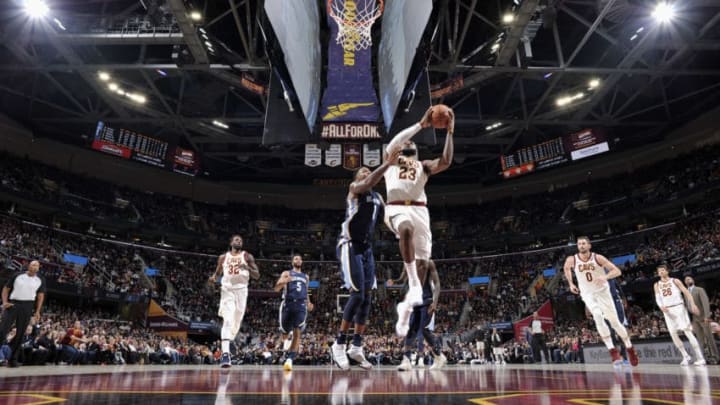The Cleveland Cavaliers and the Memphis Grizzlies serve as contrasting reminders of how quickly fortunes can turn in the NBA.
In their first 10 games, LeBron James and company wobbled to a 4-6 record, compiling a -5 net rating that placed them in the bottom 20 percent of the league. Since then, they’ve gone 12-1 with a top-five +8.5 net rating. This run includes their current 11-game winning streak, the second-longest thus far in 2017-18.
Meanwhile, the Grizzlies have traveled down the opposite path. They started their year on a promising note, winning six of their first 10 games on a +4 net rating that ranked seventh in the NBA. Over the last dozen games since then, however, they’ve tallied a 1-11 record on a -10 net rating — a differential ahead of only the cellar-dwelling Chicago Bulls. A Saturday loss to the Cavs extended their losing streak to 11 games, the longest of the season. They made a publicly scrutinized coaching change along the way.
We can see these and other trends in the following chart, which shows each team’s net rating in 10-game rolling intervals at the quarter point of the season:

Joining the Cavs among the rising teams are the Houston Rockets, who’ve taken their strong start to another level over the past few weeks. Their +17 net rating in their last 10 games paces the league during that span. It’s among the many reasons why James Harden and Mike D’Antoni were recognized as the Western Conference Player and Coach of the Month for October/November.
After lingering below average for the first part of the season, the Utah Jazz have sharply swung upward. Their +9.5 net rating in their last 10 games ranks fifth during this stretch of the season and is a far cry from the -3 that they had when Rudy Gobert suffered a leg injury. Of course, it’s worth mentioning that their recent hot streak includes blowout victories against the Chicago Bulls, Los Angeles Clippers and Orlando Magic, but there have also been some very encouraging signs, including Donovan Mitchell’s emergence.
Speaking of the Clippers and Magic, these two teams represent the other end of the spectrum. The Clippers opened their campaign with a +4 net rating, then promptly slid and settled below the NBA average as injuries wiped out Milos Teodosic, Danilo Gallinari, Patrick Beverley and Blake Griffin — four of their five starters. At one point, the Magic peaked at a +5 net rating. Their past 10 games have seen them flounder at -11, as they’ve been tested by the likes of the Golden State Warriors, Boston Celtics, Philadelphia 76ers, Portland Trail Blazers and Minnesota Timberwolves (they managed to get past the Oklahoma City Thunder, though).
We might assume that the Magic’s decline might be linked to a slumping offense, since they kickstarted the year with lights-out 3-point shooting that seemed to be a strong candidate for eventual regression. While their 3-point percentage has indeed dipped from the low-40s to the mid-30s, it’s their defense that has notably crumbled in recent weeks.
Here are the offensive and defensive ratings in 10-game rolling intervals:


In both their first 10 and their last 10 games, the Magic have posted a 107 offensive rating. By contrast, they’ve put up defensive ratings of 105 and 118. This downturn is likely related (at least in part) to the strength of their recent opponents, but the dynamics of small sample sizes and regression are also at play. During their hot start, opponents made just 31 percent of their 3-pointers; lately, this figure has been around 44 percent. Opponent free throw percentage has risen, too, although to a lesser degree. But opponent turnovers, rebounds and shot selection have remained largely the same.
Next: Nylon Calculus -- 10,000 simulated NBA seasons
Admittedly, these observations only begin to scratch the surface of the Magic’s plight, which would require more time to dissect. The broader point is to remember that wild swings can occur when examining teams in short intervals. It applies to Orlando’s defense, Boston’s defense, Utah’s offense or any other facet of a franchise’s performance. Trends can come and go, especially early in the season.
